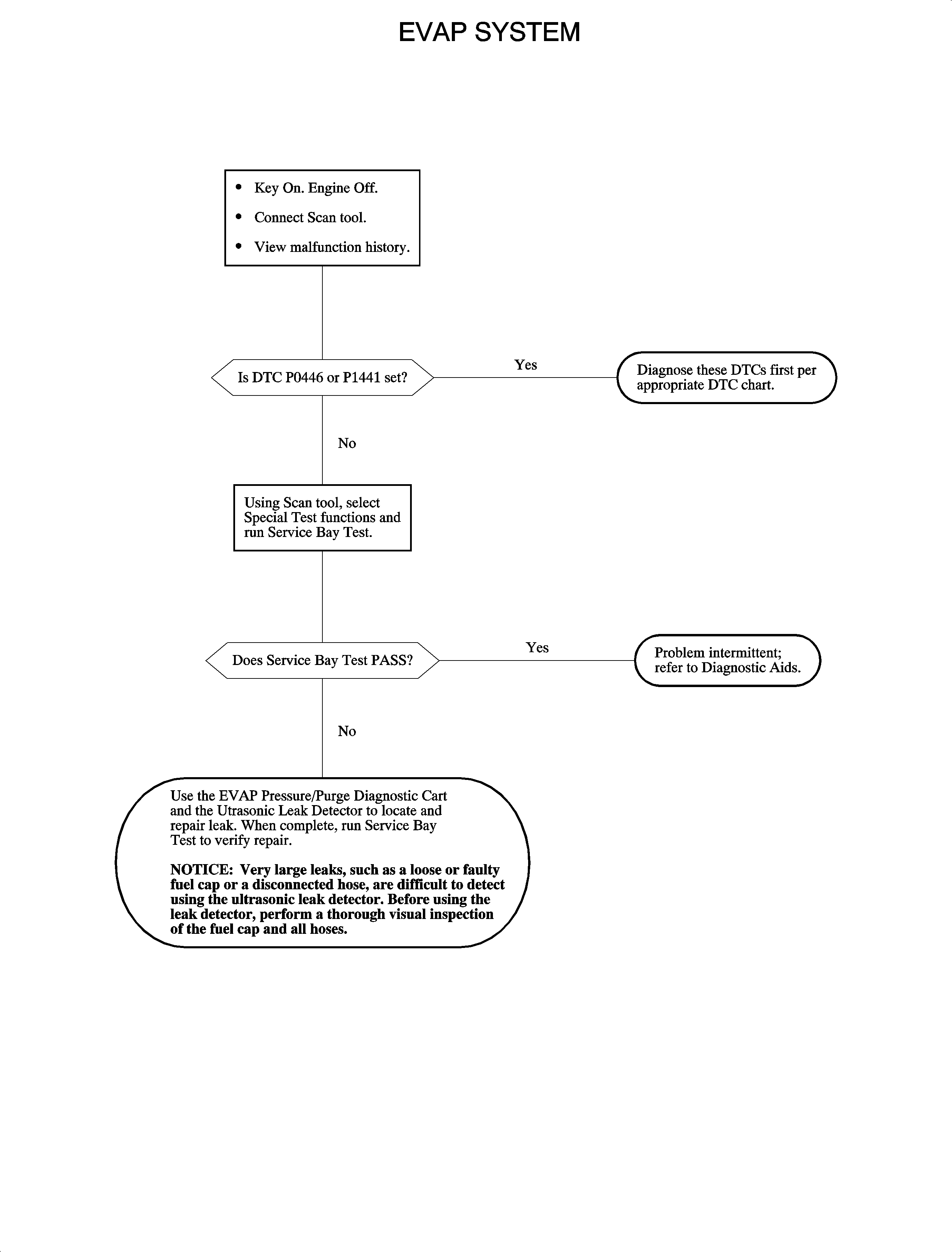Circuit Description
The evaporative emission system is tested with on-board diagnostics by applying
pressure, or vacuum, to the system and monitoring pressure decay. The PCM monitors
the vacuum level at the fuel tank pressure sensor. At the appropriate time, the vent
solenoid is commanded closed, and the canister purge solenoid is commanded to a fixed
duty cycle, allowing the engine to draw a vacuum on the entire evaporative emission
system. After a calibrated vacuum level is achieved, the canister purge solenoid is
turned OFF, sealing the system. If a sufficient vacuum pressure level can not be achieved,
a large leak fault is detected. Following is a list of possible conditions that result
in large leak detection:
| • | A missing, improperly installed, loose, or faulty fuel cap |
| • | A faulty fuel tank pressor sensor, canister purge solenoid, or canister
vent solenoid |
| • | A disconnected or damaged EVAP vent hose |
| • | Disconnected, damaged, pinched, or blocked fuel tank vapor lines |
| • | A damaged or leaking EVAP canister |
| • | A leaking fuel sender assembly or O-ring |
| • | A leaking fuel tank or filler neck |
Conditions for Setting the DTC
| • | The barometric pressure is greater than 80.8 kPa. |
| • | The IAT is between 5-32°C (41-90°F) at engine start
up. |
| • | The IAT and ECT are within 10 degrees of each other at start up. |
| • | The fuel tank level is between 15-85 percent. |
| • | The engine run time is greater than 2 seconds. |
| • | DTCs P0105, P0107, P0108, P0112, P0113, P0117, P0118, P0125, P0452, P0453,and
P0500 are not set. |
| • | The abort time is 600 seconds and 240 seconds to finish
once started. |
| • | The vacuum threshold of 8 inches of H2O was not achieved. |
Diagnostic Aids
| • | Review and record the Malf History record. |
| • | Using a scan tool, prompt the Special Test functions to run a service
bay diagnostic test. This verifies the large leak is present. If the diagnostic
passes, it may be necessary to review the importance of a tight, secure fuel cap with
the owner. |
| • | A warm test is performed by the diagnostic if the cold test fails. The
warm test can only pass the diagnostic. The purpose of this additional test is to
allow the fuel cap to be reinstalled if left off, allowing the MIL to be extinguished. |
| | Important: Very large leaks, such as a loose or faulty
fuel cap or a disconnected hose, are difficult to detect using the ultrasonic leak
detector. Before using the leak detector, perform a thorough visual inspection of
the fuel cap and all hoses.
|
| • | Use the EVAP pressure/purge diagnostic cart and the ultrasound leak detector
to locate the leak. |


